Harwich has many festivals (even if most, if not all, are cancelled in 2020).
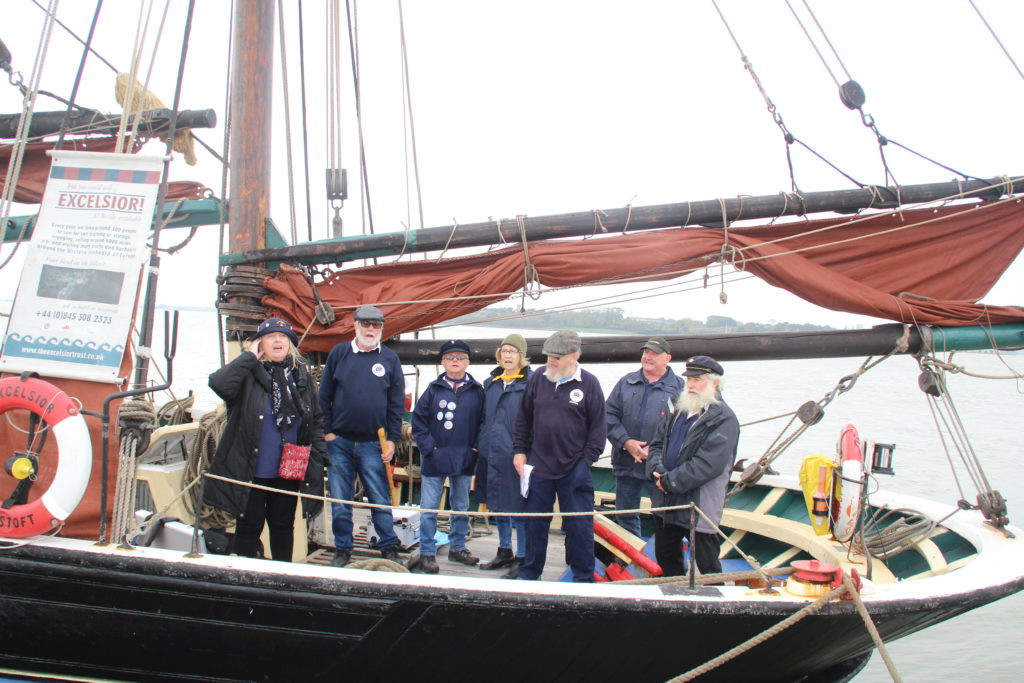
We hope to install the bell during the Shanty Festival in October, 2021.

These are illustrations from the 2019 Festival.
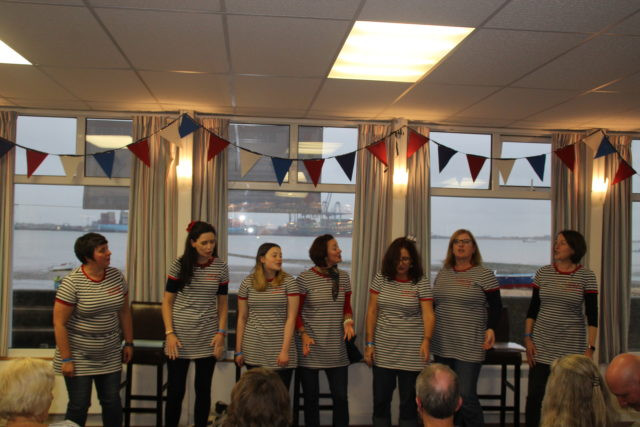
The Mablethorpe bell is the only one mounted on a beach. It is fixed to large 'helical piles', which like large corkscrews are driven deeply into the sand; this is a common way of mounting structures on sand.
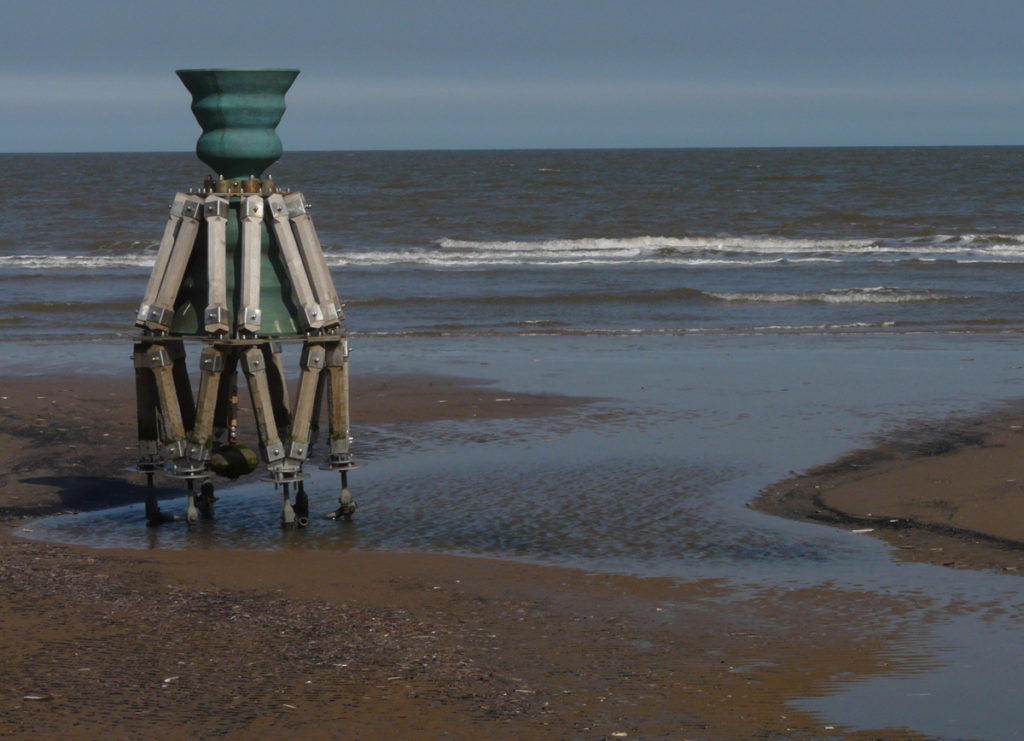
Anyone who has visited the bell may have noticed various levels of the sub-structure being revealed by shifts in the sand level. It seems that when the bell was installed the sand was at a relatively high level. but for various reasons it has changed: natural seasonal variations, the impact of large scale sand pumping just off shore, and more.
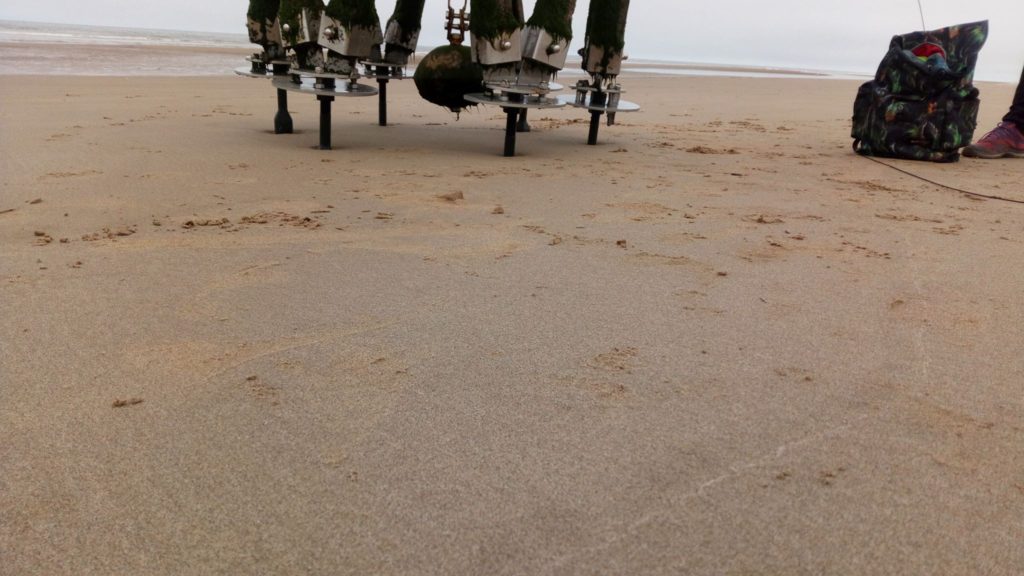
This necessitated some remedial work early in 2020.
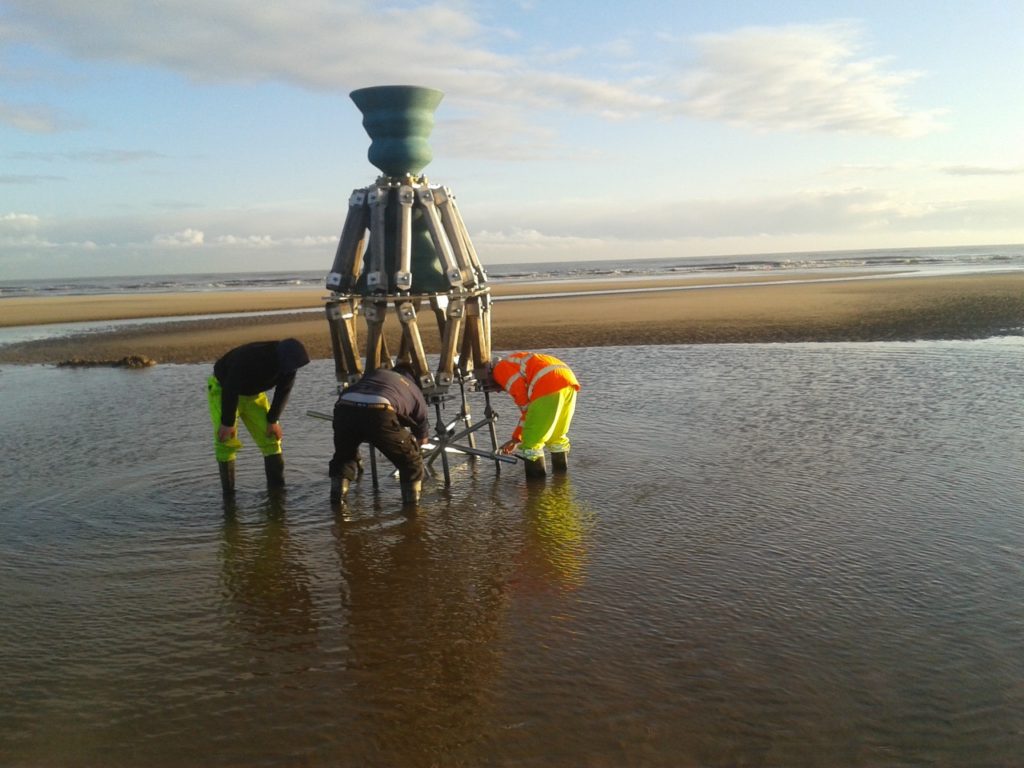
But since then the level has risen. Time will tell where it ends up.....
After a grievously long interval - given that our first toe in this water was in early March, we are striving to put momentum back into this project. The Marine Biological Association has come out of lockdown, fuloughs are over, and all we have to do is pick up where we left off (as though that were easy).
The next step is to contact all our intrepid volunteers from March and plan some activity,, which should be in the middle of October.
We have firmly mailed our colours to the iNaturalist mast, and have set up three projects on that excellent platform. And we have set up three 'projects' on it, as illustrated below.
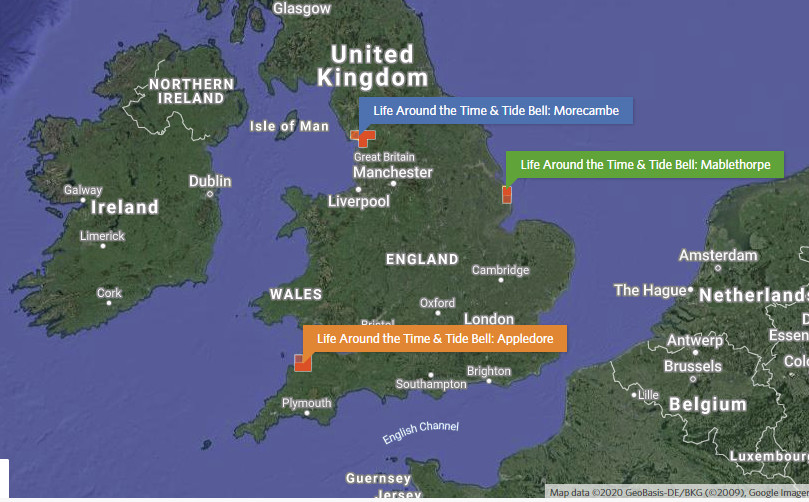
This is the link to the overall project, and here are links to the Appledore, Morecambe and Mablethorpe projects.
We are continuing to develop our Citizen Science programme, after the long break enforced by the lockdown, furloughs, etc etc.
At the heart of this project is the enormously powerful tool iNaturalist. We have created what the platform calls a 'place' - see below. It is deliberately somewhat larger than the immediate environs of the bell.
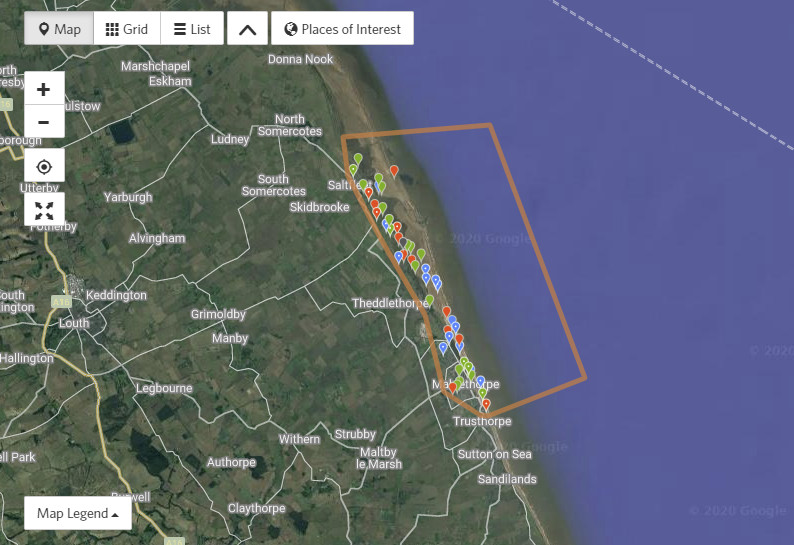
Within that place we have created a 'project', which will be central to data collection in the area. Much the best way to explore that is to use iNaturalist itself - see the link to the project here.
Having said that, examples of the observations are presented below. Click on any of the observations for more details.
A group met on the beach to kick the project off on March 4th, 2020.
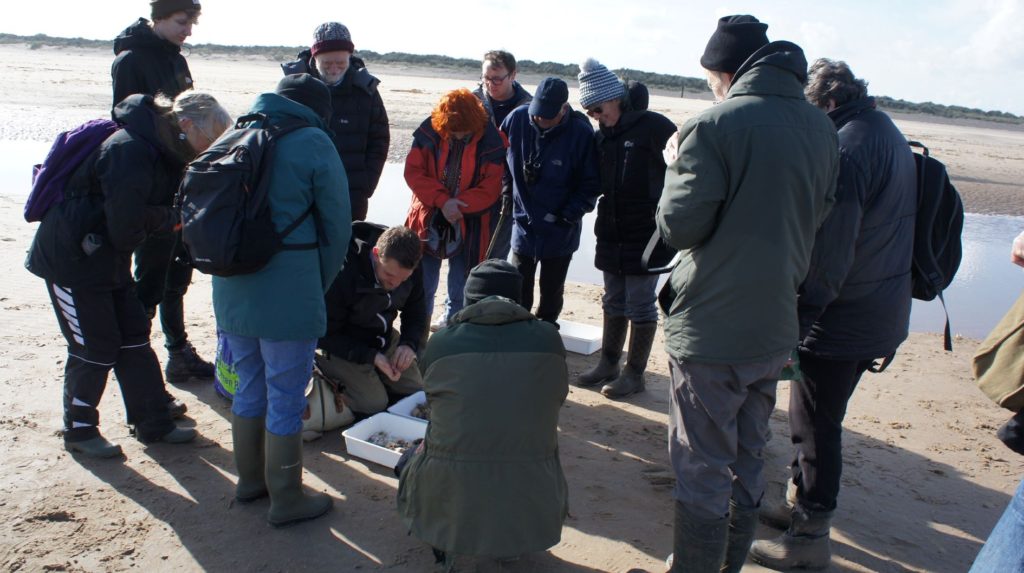
We are continuing to develop our Citizen Science programme, after the long break enforced by the lockdown, furloughs, etc etc.
At the heart of this project is the enormously powerful tool iNaturalist. We have created what the platform calls a 'place' - see below. It is deliberately somewhat larger than the immediate environs of the bell.
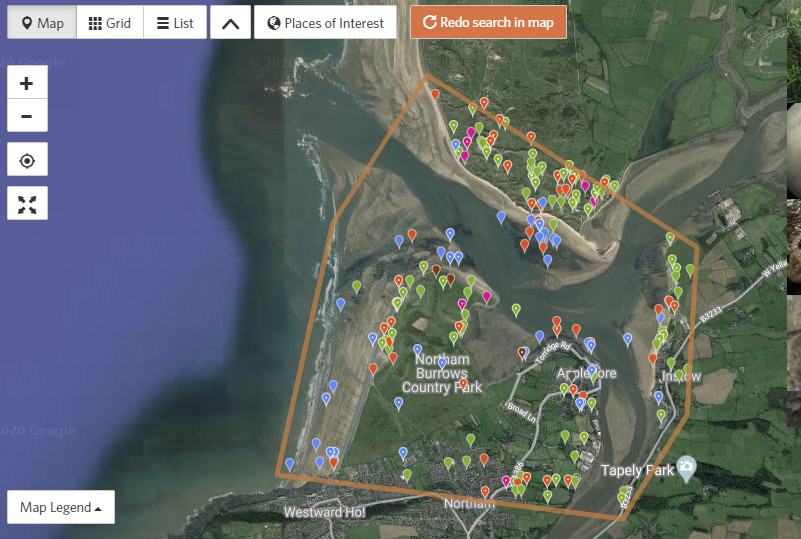
Within that place we have created a 'project', which will be central to data collection in the area. Much the best way to explore that is to use iNaturalist itself - see the link to the project here.
Having said that, examples of the observations are presented below. Click on any of the observations for more details.
Here is a group at a kick-off meeting on the foreshore on February 26 2020.
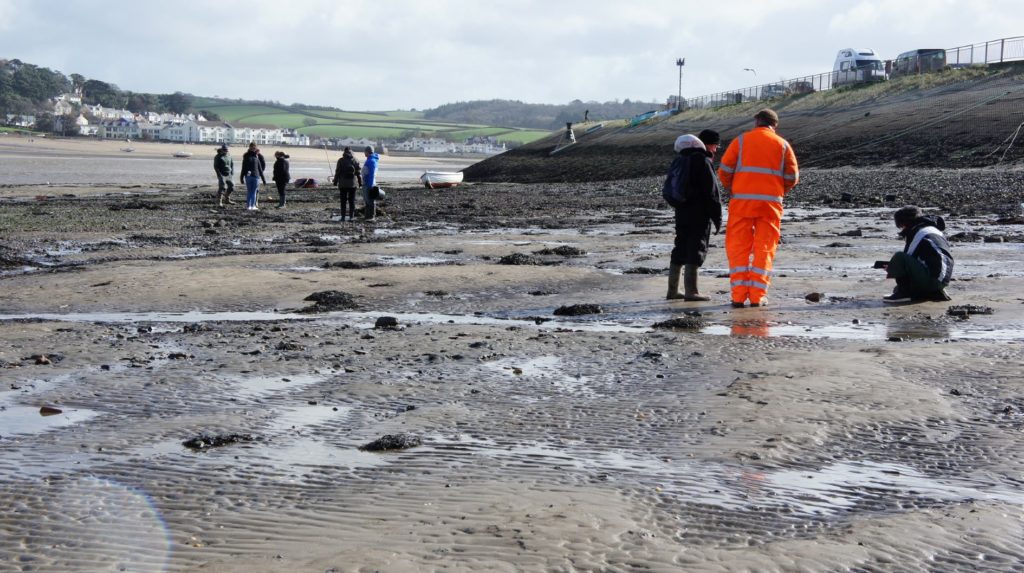
Exploring the full range of harmonics, using a variety of mallets and strikers - multi-instrumentalist Pete Moser is at it again.
A piece composed by Peter Conner and Andy Aitchison using the haunting sound of Marcus Vergette's Time and Tide Bell installation on Mablethorpe beach.
We are continuing to develop our Citizen Science programme, after the long break enforced by the lockdown, furloughs, etc etc.
At the heart of this project is the enormously powerful tool iNaturalist. We have created what the platform calls a 'place' - see below. It is deliberately somewhat larger than the immediate environs of the bell.
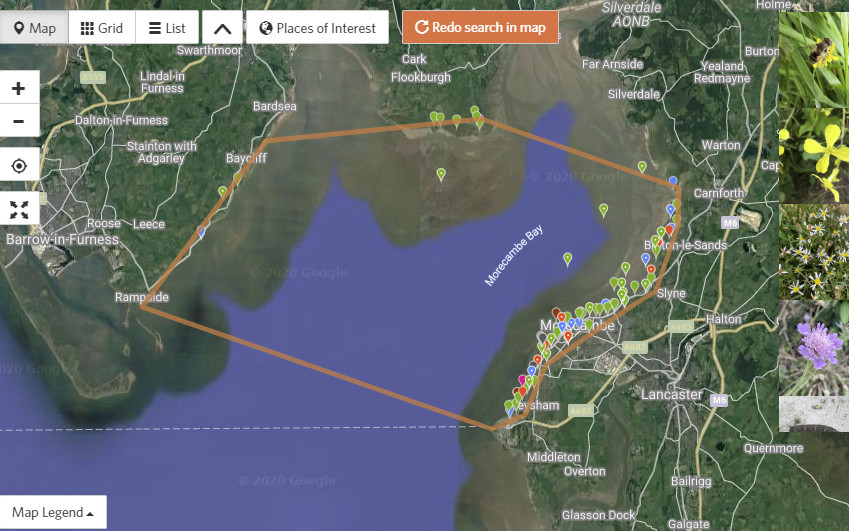
Within that place we have created a 'project', which will be central to data collection in the area. Much the best way to explore that is to use iNaturalist itself - see the link to the project here.
Having said that, examples of the observations are presented below. Click on any of the observations for more details.
Here is a group at our first meeting, in rather bleak weather on March 3rd 2020. The tide was out, always handy if you are going to explore the foreshore.
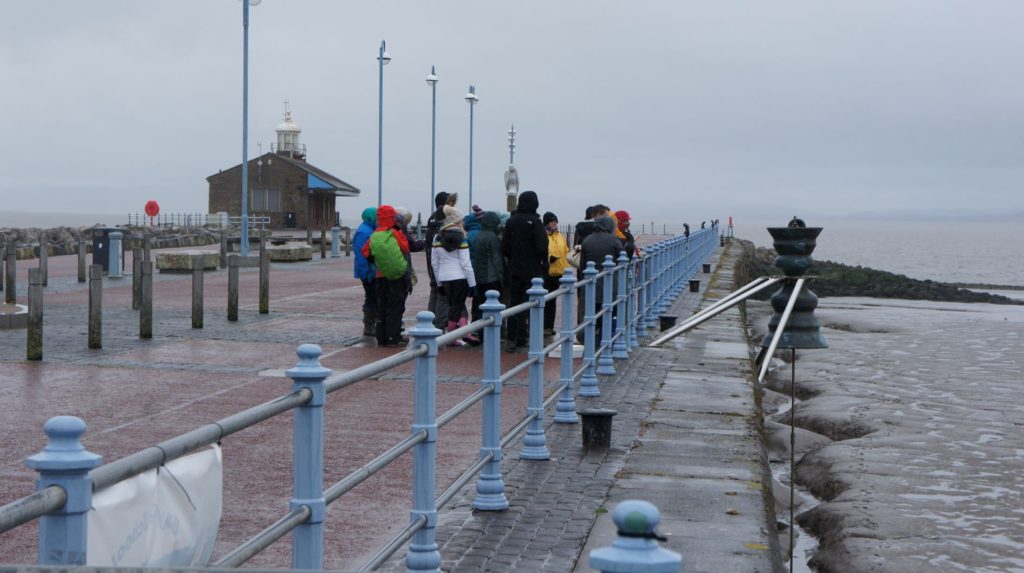
There is not much more to say about this striking graphic from the World Bank.

Managed Retreat - the idea of abandoning sections of coastline that cannot be economically defended in a 'managed' way - is a deeply contentious topic. Like most aspects of climate change it moves at a very slow pace, offering many opportunities to change the subject or sweep it under the carpet.
Politicians are frightened of it, not least because lurking not too far under the surface is the prospect of enormous costs for relocation; so places like Fairbourne are potentially crucial precedents.
The subject has just (July 14 2020) had an airing on the US political website Politico here, accompanied by a deeply - gratuitously? - emotive photo.
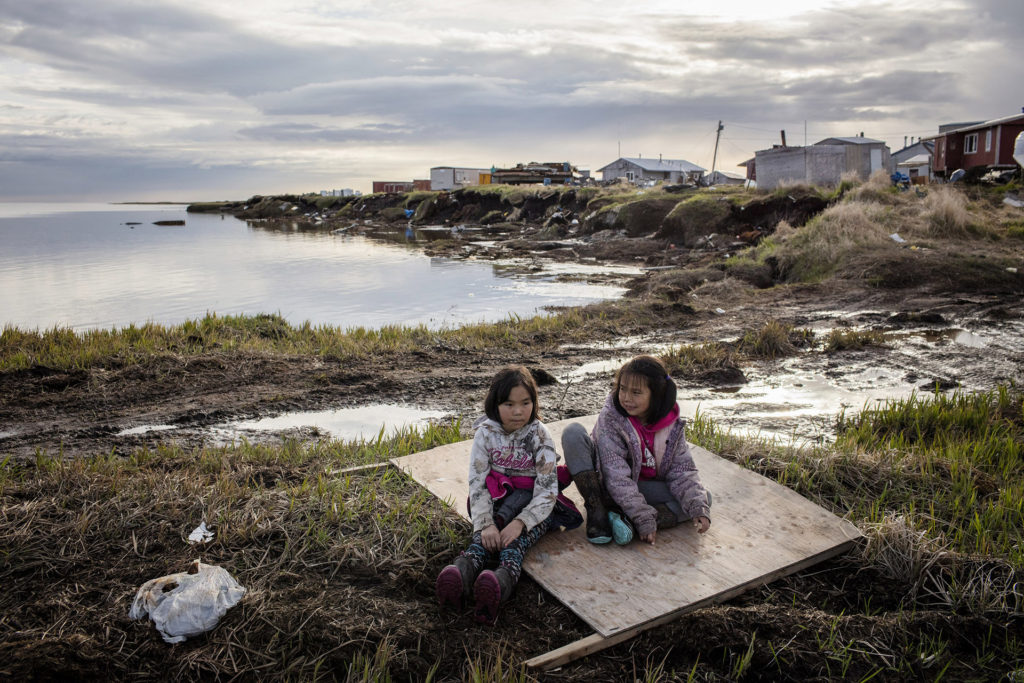
Their introduction:
Millions of Americans are about to lose their homes to climate change. In a matter of decades, more than half of the land area of Hoboken, N.J., almost half of Galveston, Texas, and almost two-thirds of Miami Beach, Fla., will become uninhabitable due to sea level rise. The Union of Concerned Scientists warns that up and down the Atlantic and Pacific coasts, more than 300,000 homes worth a combined $117.5 billion are at risk of chronic tidal flooding in the next 30 years. And that’s likely an underestimate: A major report released in June shows that federal flood maps underestimate the number of homes and businesses at risk of flooding by a stunning 67 percent.
And it has been echoed by US sea level guru John England in a blog post here. To quote him:
The U.S. Government is largely silent about “retreat” from the coastline – or at least does not use that word. Retreat has powerful connotations, particularly for property owners. It implies surrender. It carries great economic and political sensitivity. For many coastal communities it poses an existential threat. Nonetheless, managed retreat is increasingly a topic of conversation, as sea level rises, pushing the high water mark ever higher, even in good weather. The worldwide policy problems posed by the need to relocate tens of millions is one the world has never had to confront.
This difficult and emotive subject isn't on any widely visible agenda in the UK at the moment. It should be.
Anyone familiar with flooding in its various forms needs little reminder of the impact this has on lives and livelihoods. The Committee on Climate Change has done its best to shed light on the problem - and the action needed to remedy it - in an extensive report Managing the coast in a changing climate, published in October 2018.
It is a bleak document, for several reasons. One is the subtext, rarely brought to the fore, of the suffering implicit in managed retreat from land and property not defensible on an economic basis. Another is the huge question mark hanging over the Government's ability and willingness to contribute the many billions needed for even a basic strategy to manage the problem.
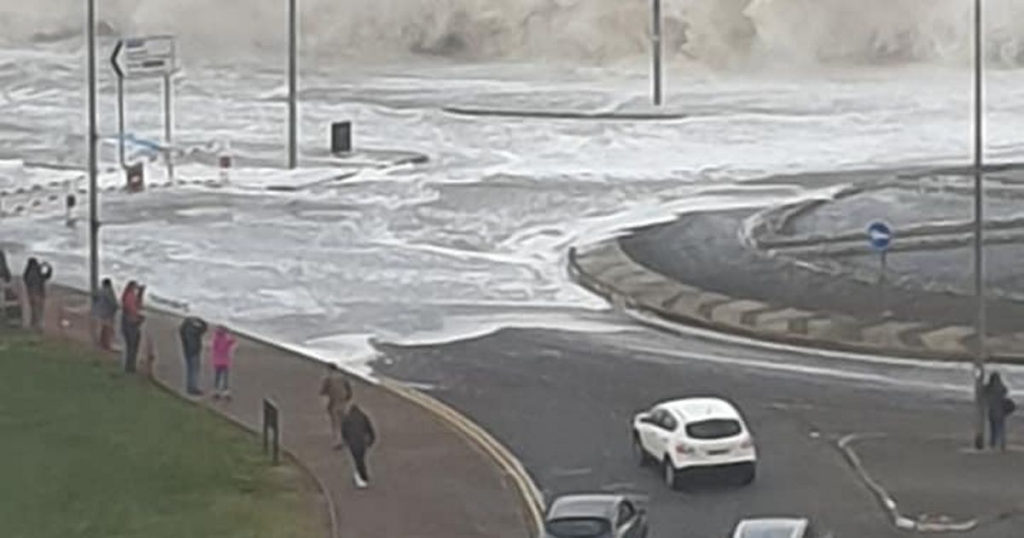
The document speaks for itself, and is worth reading. However the key findings (not the recommendations) are reproduced below. It is tempting to add emphasis - but which point would not be emphasised?
Climate change will exacerbate the already significant exposure of the English coast to flooding and erosion. The current approach to coastal management in England is unsustainable in the face of climate change:
- Coastal communities, infrastructure and landscapes already face threats from flooding and coastal erosion. These threats will increase in the future. In the future, some coastal communities and infrastructure are likely to be unviable in their current form.
- This problem is not being confronted with the required urgency or openness. Sustainable coastal adaptation is possible and could deliver multiple benefits. However, it requires a long term commitment and proactive steps to inform and facilitate change in social attitudes.
- It is almost certain that England will have to adapt to at least 1m of sea level rise at some point in the future. Some model projections indicate that this will happen within the lifetimes of today's children (i.e. over the next 80 years).
- In England, 520,000 properties (including 370,000 homes) are located in areas with a 0.5% or greater annual risk from coastal flooding and 8,900 properties are located in areas at risk from coastal erosion, not taking into account coastal defences.
- By the 2080s, up to 1.5 million properties (including 1.2 million homes) may be in areas with a 0.5% of greater annual level of flood risk and over 100,000 properties may be at risk from coastal erosion.
- The public do not have clear and accurate information about the coastal erosion risk to which they are exposed, nor how it will change in future.
- Today, coastal management is covered by a complex patchwork of legislation and is carried out by a variety of organisations with different responsibilities.
- The current policy decisions on the long-term future of England's coastline cannot be relied upon as they are non-statutory plans containing unfunded proposals.
- We calculate that implementing the current Shoreline Management Plans to protect the coast would cost £18 - 30 billion, depending on the rate of climate change, and that for 149 - 185 km of England's coastline it will not be cost beneficial to protect or adapt as currently planned by England's coastal authorities.
- To minimise these risks, global emissions of greenhouse gases need to fall dramatically, which would slow sea level rise in the long term. In parallel, the UK needs to strengthen its policies to manage the risks of coastal flooding and erosion.
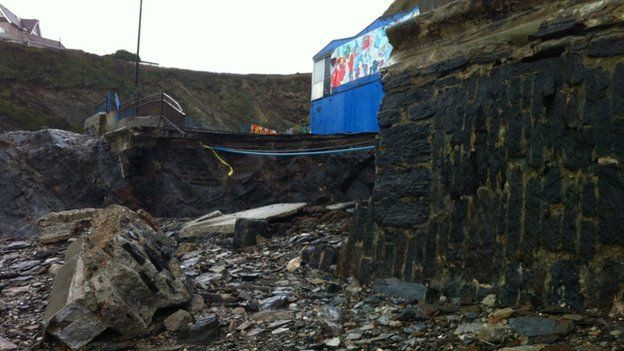
An older report from the Joseph Rowntree Foundation makes the point that coastal communities are already at something of a disadvantage due to a variety of socio-economic and demographic effects. It's a double whammy - relatively poor and vulnerable communities face more extreme burdens from climate change than inland communities do.
Fairbourne, a coastal village in Gwynedd, Wales, exemplifies the legal, organisational, planning and financial challenges of coastal settlements that are too costly to defend.
Opinions will differ on whether or not Fairbourne qualifies for that description. But it is inescapable that as the years and decades pass other places will fall into that category.
There have been good journalistic explorations of the subject; one is in the Guardian of May 18 2019, and another was featured on Channel 4 on Sept 20, 2019:
This is an enormously complex subject. The expected behaviour of ice sheets in response to increased atmospheric temperatures is inevitably imperfectly understood; modelling of future temperatures over Greenland and the Antarctic is also far from perfect; there is huge variability in expected emissions pathways; and much more.
These are all issues far too involved to consider in detail here. For those interested a more in-depth and readable summary of recent research is available from Carbonbrief here, with copious links to the original research.
The nearest thing to a gold standard in forecasting is the work of the IPCC, which produces periodic reports updating a comprehensive overview of published science. The most relevant is that of Working Group 1 (WG1) in the Synthesis Report of the 5th Assessment report (AR5) in 2013 – whose summary graph is shown below.
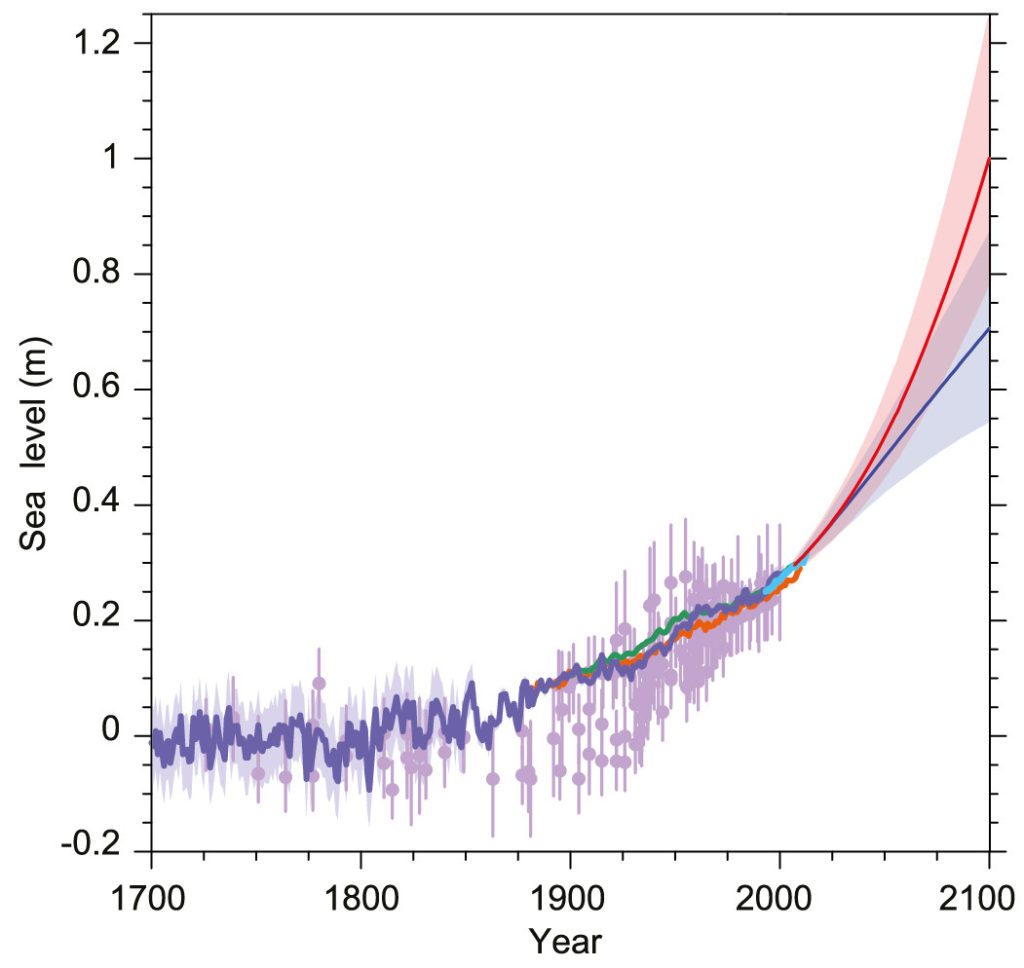
The graph indicates a range of possible rises between about half a meter and over one meter, depending primarily on emissions pathways for the rest of the century. The text of the report states that ‘it is virtually certain that sea level will continue to rise during the 21st century and beyond’.
IPCC publications are the result of a ponderous and somewhat political and therefore conservative process. From their nature they also tend, in cases where research on the subject is fairly fast moving, to be out of date. So it is appropriate to look at alternative sources.
First, a more recent (2017) study by NOAA, the authoritative National Oceanic & Atmospheric Administration in the USA. It again takes a scenario approach, with 2100 outcomes ranging up to two and a half meters.
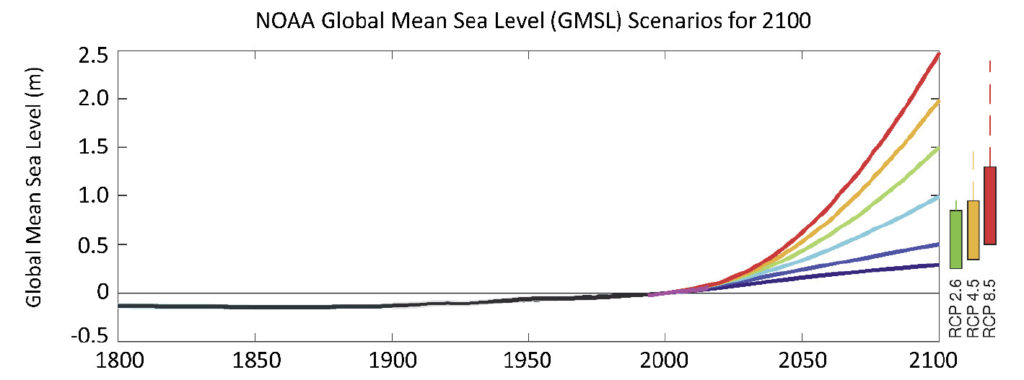
These and many more studies understandably take refuge in scenarios, while acknowledging a certain level of absolutely inevitable sea level rise due to the warming that has already taken place, and the ice-melting and thermal expansion that must inevitably result. Another approach is known as Expert Assessment. Here is Stefan Rahmstorf from the equally authoritative Potsdam Institute for Climate Impact Research (PIK), giving a very measured outline of research from PIK in May 2020.
The Carbonbrief review mentioned above takes a variant on the Expert Assessment approach, looking at 'Estimates of sea level rise by 2100 under very-high emissions scenarios, published between 1983 and 2018. Dots represent the best estimate, while bars represent the high and low-end estimates (when available). Black lines indicate IPCC report values, and the grey region extends those values forward until the next IPCC report'. The figure is based on data from Garner et al 2018;
All these studies are very well, but they are not the best possible help for people who want to know what to do - how to think about the future? And what is so magical about 2100 anyway? Why not 2078, or 2136? These dates mostly concern our children, or theirs (or theirs); it's hard to see the difference....
The answer must lie in 'taking a view'. It seems clear that a 1m sea level rise in less than a century is very possible; 2 meters is far from being out of the question. For its part, the Environment Agency has taken a bold stance: As a nation, we need to be prepared for a 2°C rise in global temperatures, but plan for a 4°C rise , which would undoubtedly lead to more than 1 meter rise. It remains to be seen whether it will have the funding to match that ambition.
And the crux of the issue is the impact; what are the implications for people living on the UK coast? Our current best shot at exploring this is here.
Sea level is rising.
First of all, the context. Since the last ice age maximum (about 20,000 years ago) the sea has risen by about 100 meters, as ice sheets and glaciers world-wide melted. But for about the last 7,000 years the level has been pretty stable.
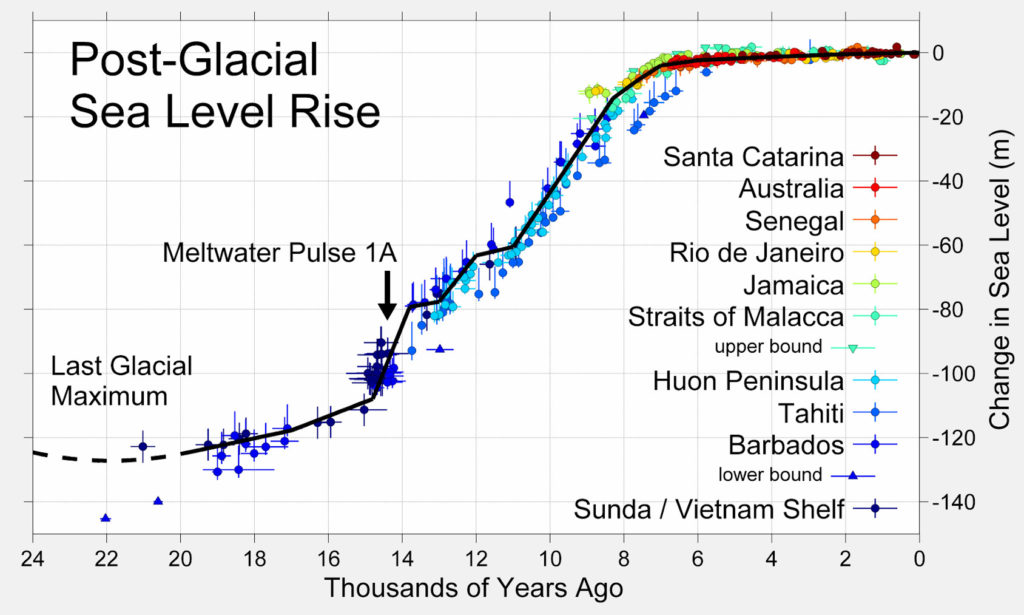
This is illustrated in more local history: at the time of the last ice age Doggerland was a huge area between Britain and Denmark; as the ice retreated and the sea level rose, it shrank, forming a marshy land round the perimeter of the Low Countries and the East coast of the UK.
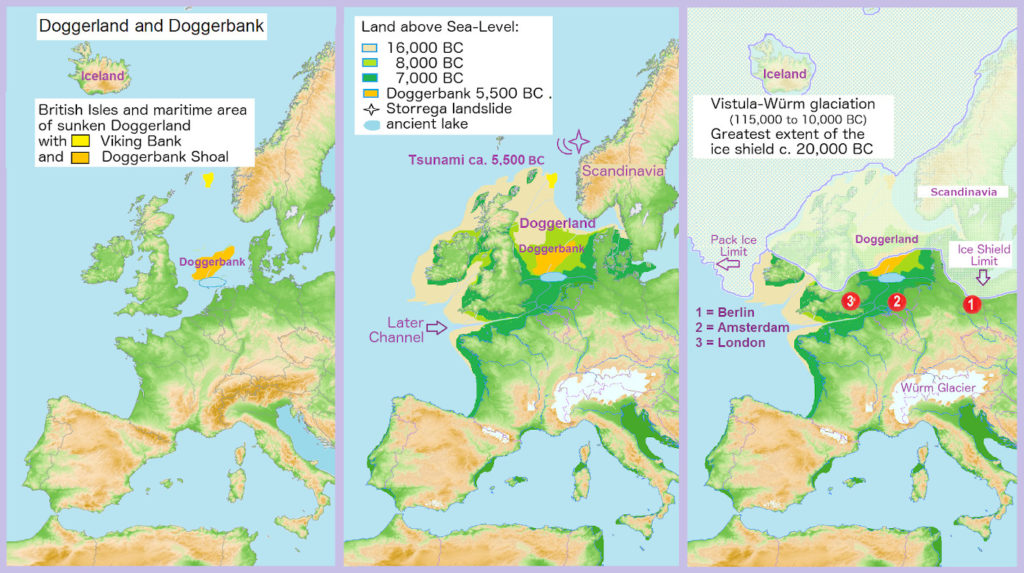
Which brings us to recent times. Careful analysis of a variety of records demonstrates that over a couple of milennia of modest changes in sea level - upwards and downwards - the 20th century has seen the vast majority of rise in that period.
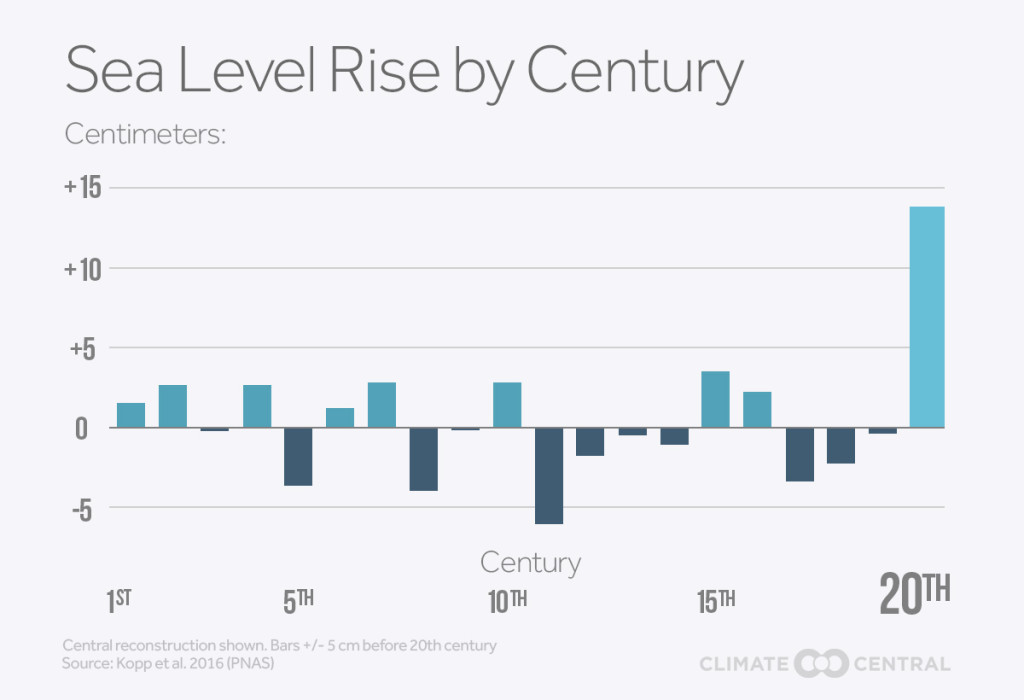
It is virtually without doubt that this has been caused by the burning of fossil fuels. The CO2 emissions from this has caused warming of the atmosphere (due to the 'enhanced greenhouse effect') and in turn sea level rise, for two main reasons:
- The melting of ice sheets and glaciers, especially in Greenland and Antarctica.
- The warming of the sea as it absorbs increased heat from the atmosphere, causing it to expand slightly.
The result is a rise in mean global sea levels currently of about 3.4 mm per year. There are variations from place to place due to the wind, localised warming effects, and local melting of ice.
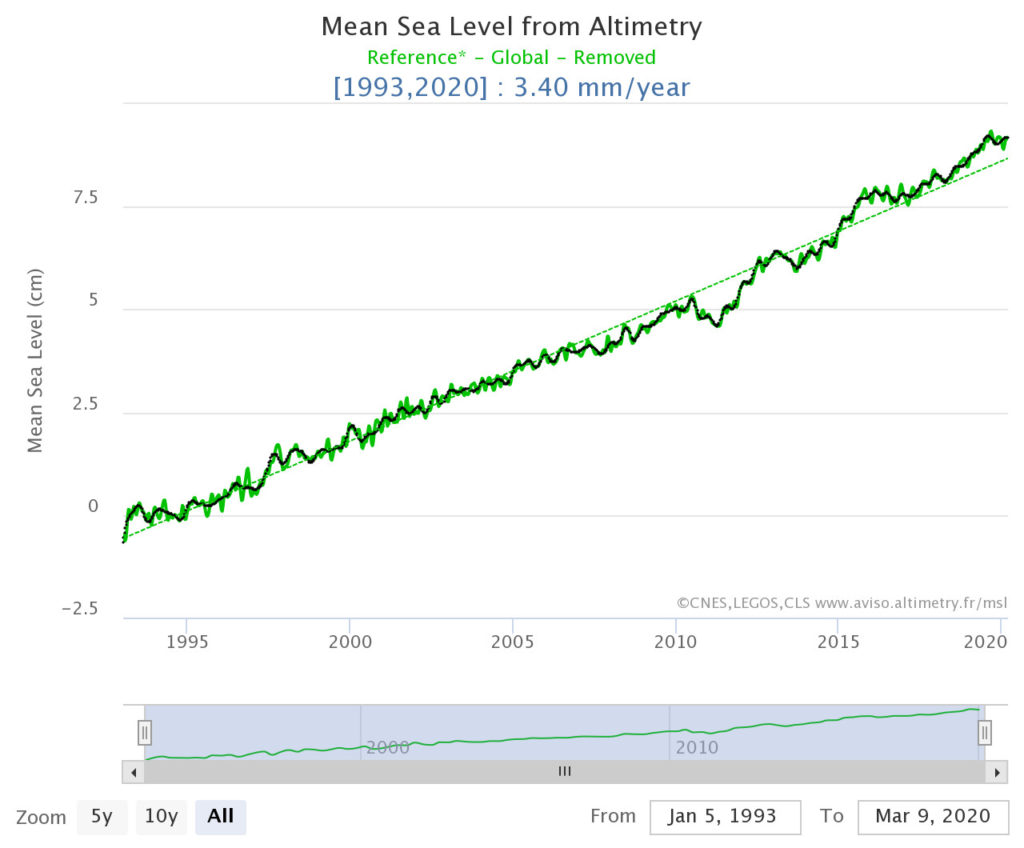
To complicate matters, there is another factor going on – adjustment of land levels following the removal of the ice mass 7,000 years ago. This map shows that Southern Ireland and Wales, and Southern and Eastern England are continuing to sink, whilst Scotland is rising, at rates less than previously predicted. This effect, in the region of 1mm per annum is, however, not as pronounced as sea level rise.

The short version is therefore that the sea level is currently rising round the UK coast at about 3 or 4 mm a year, i.e. 30 cm (roughly a foot) a century. There is every reason to believe that this rate will accelerate, however, as covered in our post on Forecasting Future Sea Levels. And even more to the point, we start to explore here what the impact of this is likely to be on the coast.
This is a different way of ringing a Time and Tide Bell... Multi-instumentalist and composer Pete Moser uses a soft and hard mallet. There are plans to repeat this every month....
There is much current discussion of the form Government investment policy should take post-Covid-19. A study just published by the University of Oxford's Smith School of Enterprise and the Environment, and covered in Carbon Brief looks at whether various possible fiscal recovery packages would accelerate or retard progress on climate change.
Short version, five policy recommendations stand out:
- Clean physical infrastructure investment in the form of renewable energy assets, storage (including hydrogen), grid modernisation and carbon capture and storage (CCS) technology;
- Building efficiency spending for renovations and retrofits including improved insulation, heating and domestic energy storage systems;
- Investment in education and training to address immediate unemployment from Covid-19 and structural shifts from decarbonisation;
- Natural capital investment for ecosystem resilience and regeneration including restoration of carbon-rich habitats and climate-friendly agriculture; and
- Clean R&D spending.

There is also this really interesting analysis of varied impacts on both climate change and financial benefits. Look at the benefit of bailing out the airline sector in the bottom left - low benefit, lousy climate consequences of course, but quick returns.....
The thinktank The Centre for Towns has recently published a report called The effect of the COVID-19 pandemic on our towns and cities. The Centre is 'an independent non-partisan organisation dedicated to providing research and analysis of our towns. Whilst our cities receive a good deal of attention, we believe that there should be equal attention paid to the viability and prosperity of our towns'.
The report makes sobering reading. Not only are seaside towns hit hard by the epidemic, but their ability to recover following the lockdown will be limited.
Over a half of employees in some places are currently in sectors which are effectively shut down. These places include Newquay in Cornwall (56%) and Skegness (55%) on the East Midlands coast. Coastal towns are disproportionately affected by the shutdown.
On average over a quarter of all employed people in coastal towns across England and Wales are currently employed in shut down sectors.
The closure of hotels, bed and breakfasts, campsites and caravan parks due to COVID-19 impacts upon coastal towns, with towns like Newquay, St Ives, Skegness, Llandudno and Rhyl particularly affected.
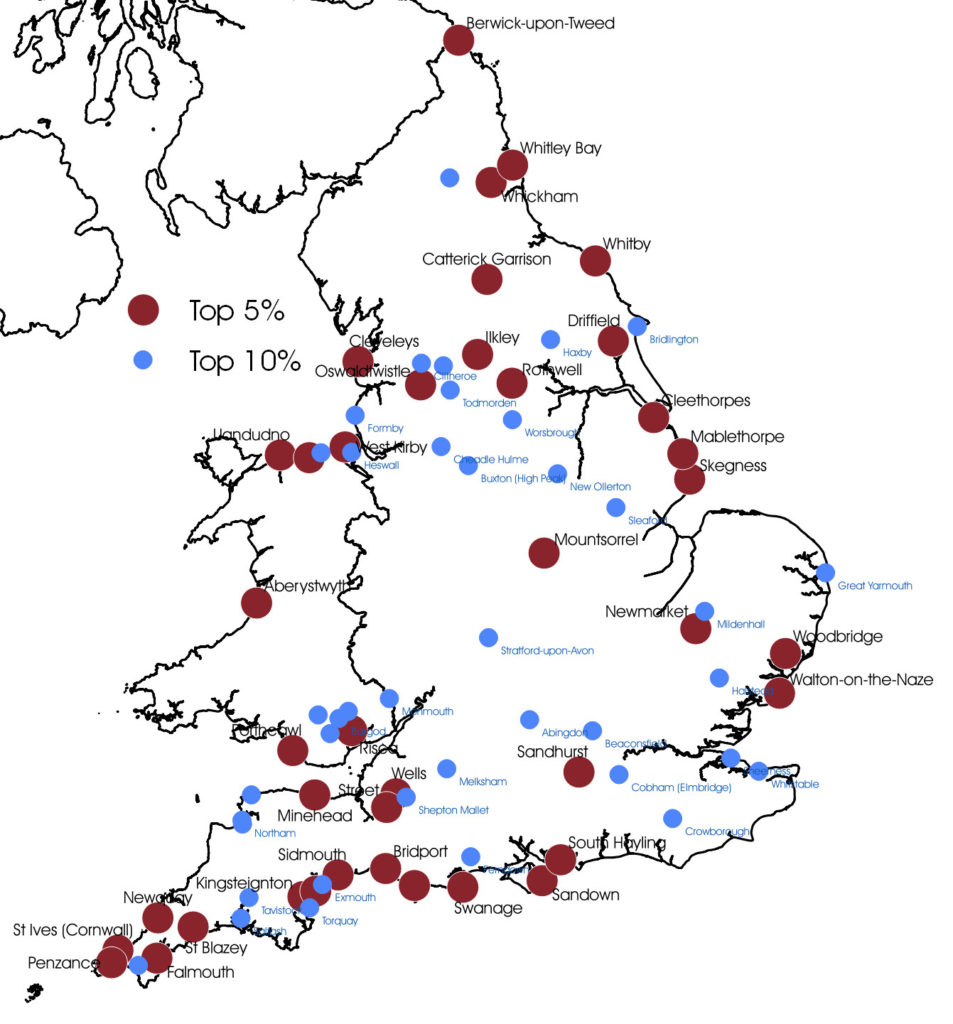
This map shows in red those towns that are in the top 5% of those in the country for the proportion of the working population employed in providing accommodation - and the large majority is on the coast.
What is our contribution to the challenge this poses? Good question - currently it's work in progress.
Pete Moser of Morecambe wrote this song. It was sung by a group of schoolchildren at the formal opening of the bell on June 7 2019.
The song underlines one of the key themes the bells explore - climate change, and hence rising sea levels.
We'd love you to sing it too. Here's the score - you can download it here.
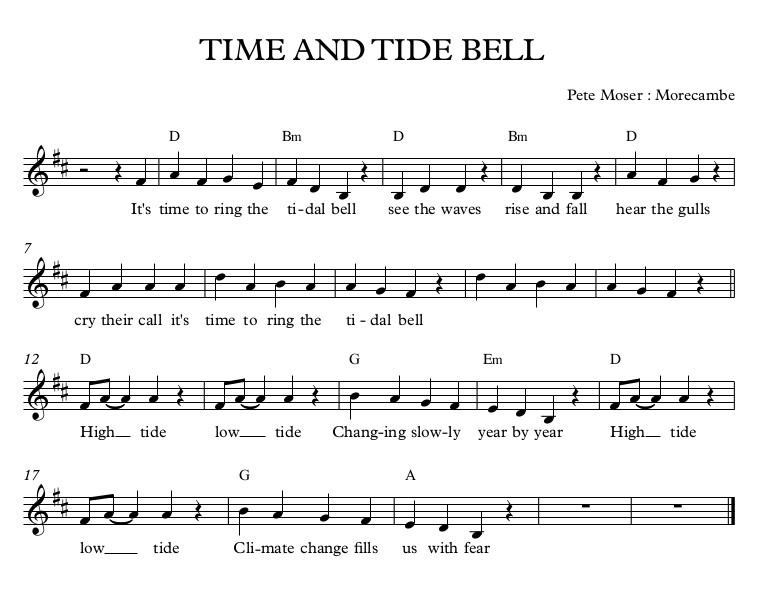
This is to keep you up to date on developments since our meetings not much more than a month ago - though it also seems like a long time indeed.
We were in the process of distilling the various various proposals into something concrete. That is still in hand, and certainly remains our intention, but unfortunately the Marine BIological Association has found it necessary to furlough Jack Sewell, who was a key part of these plans.
We - Jack, Jon Parr (Jack's colleague at the MBA), Juliette Heppell and I - will return to things just as soon as we can. There are already intriguing germs of thoughts as to the way forward, and we are confident of an extension to the project from UKRI - so it won't disappear.
In the meantime please look after yourselves; and if you or anyone you know has small children at home who need occupying have a look at our new Learning at home page that Juliette has created on our website, a new activity each day to keep them creatively occupied.
A virtual meeting was held on march 23, between the MBA team, Time and Tide Bell team, and some of those who had attended the workshops.
The first point was obvious - the radical changes to life in the UK due to the coronavirus epidemic have had a big impact on the project, taking place as they have at its most critical phase: trying to define its shape. There is a chance of extending funding until November.
Jack Sewell ran through his draft report - which revealed much commonality between the different locations. This is well illustrated by a word cloud of the proposals put forward:
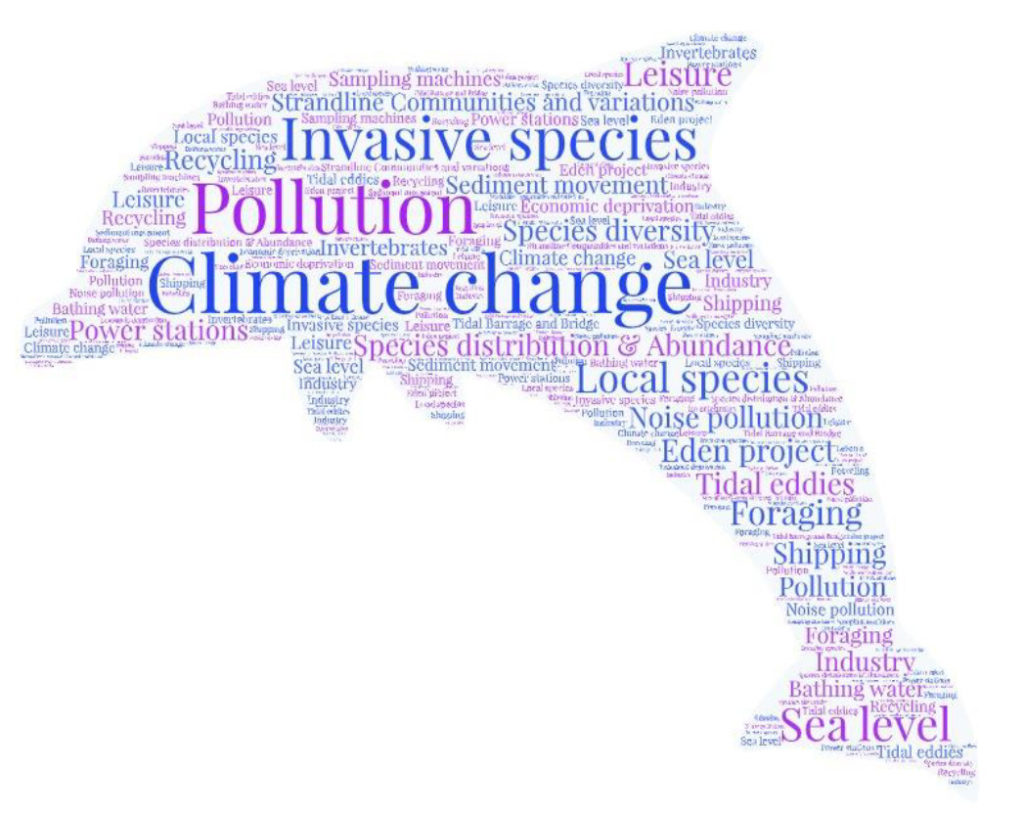
Similar work had been done on the must-haves for such a project:
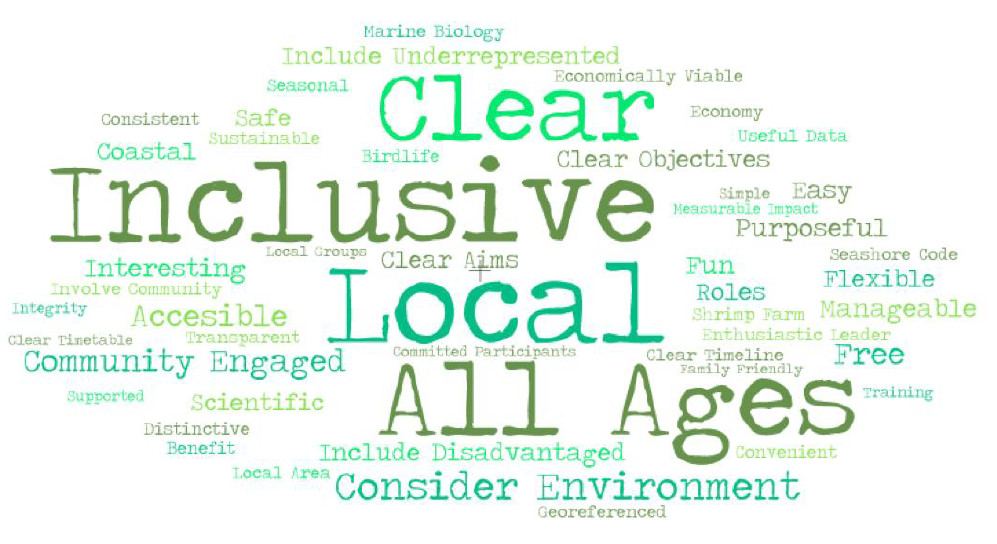
And the must-not-haves:
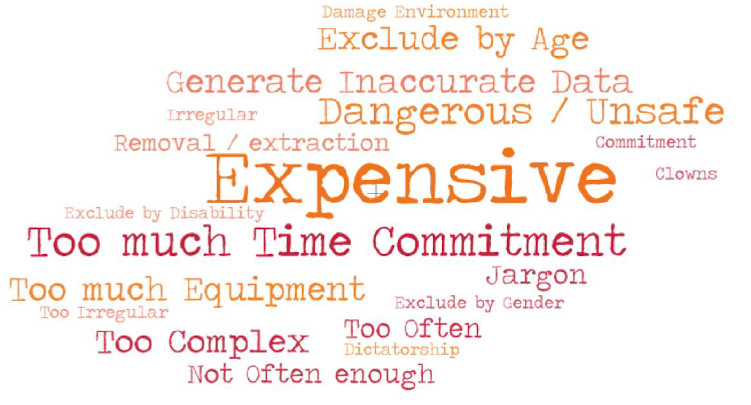
The project remains work in progress. Watch this space; all those who attended will be kept fully in touch with developments.




